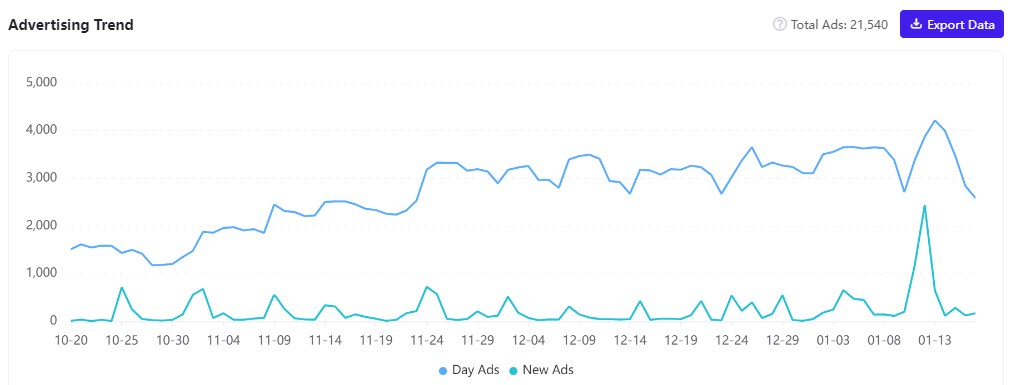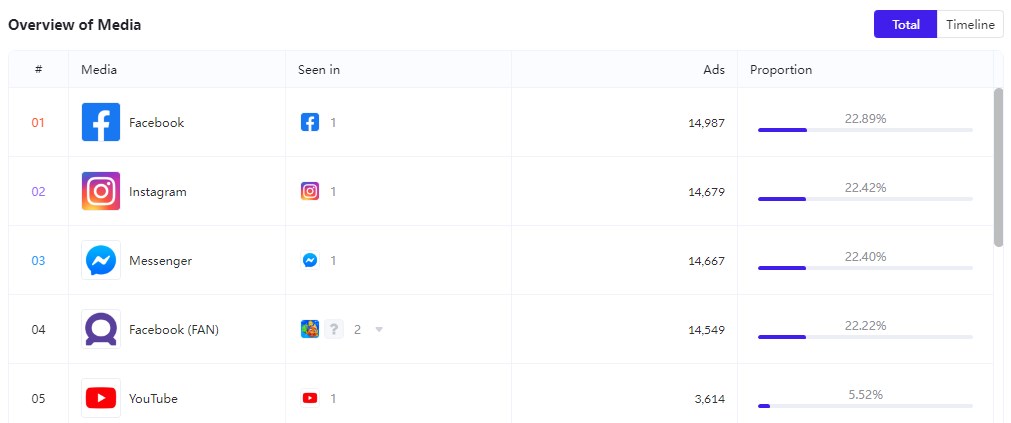Doomsday: Last Survivors is a strategy game that challenges players to survive in a post-apocalyptic world. The game was developed and published by IGG, a leading game company from China. It was released globally on March 15, 2023, after a successful pre-registration campaign that started on March 5, 2023. The game has been updated regularly, with the latest version being V1.26.1.
The game has achieved remarkable results in terms of downloads, rankings, and revenue. According to AppGrowing, a professional mobile advertising intelligence platform, Doomsday: Last Survivors has created 109,281 ads in total, covering 50 areas and 15 media. The game has also ranked in the top 10 of the Google Play charts in 28 countries, including Malaysia, where it reached the No.1 spot.
In this article, we will analyze how Doomsday: Last Survivors used smart advertising strategies to achieve such impressive results. We will look at the following aspects:
- The distribution and performance of the game’s ads across different regions and media
- The types and features of the game’s ad creatives and how they appeal to the target audience
- The best practices and tips for creating effective strategy game ads based on the game’s case study
01 How Doomsday: Last Survivors Distributed and Performed Its Ads Across Different Regions and Media
One of the key factors that contributed to the game’s success was its wide and effective distribution of ads across different regions and media. According to AppGrowing, Doomsday: Last Survivors has created 109,281 ads in total, covering 50 areas and 15 media. The game has also ranked in the top 10 of the Google Play charts in 28 countries, including Malaysia, where it reached the No.1 spot.
The game’s ads have been mainly focused on the following regions: Asia, North America, Europe, and Latin America. These regions have a large and growing market for strategy games, as well as a high penetration of smartphones and internet access. The game’s ads have also targeted some emerging markets, such as Africa and the Middle East, where the demand for mobile games is increasing.
The game’s ads have been mostly distributed on Meta Media, a popular and powerful mobile advertising network. Meta Media has a global reach and a diverse portfolio of publishers and platforms. Meta Media also offers advanced targeting and optimization features, such as audience network, lookalike audience, and app event optimization. According to AppGrowing, Doomsday: Last Survivors has created 89.93% of its ads on Meta Media, which shows the game’s strong reliance and trust on this network.
The game’s ads have also performed well on Meta Media, generating high impressions, clicks, and conversions.
02 How Doomsday: Last Survivors Created and Designed Its Ad Creatives and How They Appeal to the Target Audience
Another key factor that contributed to the game’s success was its creative and appealing ad creatives. According to AppGrowing, Doomsday: Last Survivors has created 21,540 ads from October 20, 2023, to January 17, 2024, of which 84.18% are in the form of in-feed ads. In-feed ads are ads that appear within the content feed of a platform, such as Facebook, Instagram, or TikTok. In-feed ads are effective for mobile games, as they can blend in with the user’s browsing experience and generate curiosity and interest.
The game’s ad creatives are mainly horizontal and square videos, which account for 67.65% of the total. Video ads are ideal for strategy games, as they can showcase the game’s features, gameplay, graphics, and sound effects in a dynamic and immersive way. Video ads can also trigger emotional responses from the users, such as excitement, curiosity, or fear, depending on the theme and tone of the game.
The game’s ad creatives have the following characteristics and features:
- They use eye-catching and relevant thumbnails, titles, and captions to attract the user’s attention and convey the main message of the game. For example, some of the thumbnails show the game’s logo, characters, or scenes, while some of the titles and captions use phrases like “Survive the Apocalypse”, “Build Your Base”, or “Fight for Resources”.
- They use realistic and high-quality graphics and animations to create a vivid and immersive representation of the game’s world and scenarios. For example, some of the videos show the game’s environments, such as ruined cities, deserts, or forests, as well as the game’s elements, such as buildings, vehicles, weapons, or zombies.
- They use suspenseful and dramatic music and sound effects to create a tense and thrilling atmosphere and mood for the game. For example, some of the videos use sounds like explosions, gunshots, screams, or sirens to enhance the game’s action and urgency.
- They use gameplay footage and demonstrations to highlight the game’s features and mechanics and show the user what they can do and expect in the game. For example, some of the videos show the game’s modes, such as base building, resource management, combat, or exploration, as well as the game’s challenges, such as enemies, disasters, or events.
- They use social proof and incentives to persuade and motivate the user to download and play the game. For example, some of the videos show the game’s ratings, reviews, or awards, while some of the videos offer rewards, such as free items, bonuses, or discounts, for the user who installs the game.
03 Best Practices and Tips for Creating Effective Strategy Game Ads Based on Doomsday: Last Survivors’ Case Study
Based on the analysis of Doomsday: Last Survivors’ advertising strategies and results, we can derive some best practices and tips for creating effective strategy game ads, as follows:
- Choose the right regions and media for your game’s ads, based on your game’s target market, genre, and budget. Use data and insights from platforms like AppGrowing to identify and optimize your game’s ad distribution and performance.
- Use in-feed video ads as your main ad format, as they can deliver high engagement, retention, and conversion rates for strategy games. Make sure your video ads are optimized for mobile devices, such as using the right aspect ratio, resolution, and duration.
- Use catchy and relevant thumbnails, titles, and captions for your video ads, as they can influence the user’s decision to watch or skip your ads. Use keywords and phrases that relate to your game’s theme, genre, and features, and avoid using misleading or false information.
- Use realistic and high-quality graphics and animations for your video ads, as they can create a strong visual impact and impression for your game. Use colors, lighting, and effects that match your game’s style and tone, and avoid using low-quality or irrelevant images or videos.
- Use suspenseful and dramatic music and sound effects for your video ads, as they can create a powerful emotional and psychological effect for your game. Use sounds that match your game’s theme and genre, and avoid using sounds that are too loud, annoying, or distracting.
- Use gameplay footage and demonstrations for your video ads, as they can showcase your game’s features and mechanics and show the user the value and fun of your game. Use footage that is clear, smooth, and relevant, and avoid using footage that is blurry, choppy, or boring.
- Use social proof and incentives for your video ads, as they can increase your game’s credibility and appeal and encourage the user to take action. Use proof and incentives that are genuine, relevant, and attractive, and avoid using proof and incentives that are fake, irrelevant, or unappealing.
By following these best practices and tips, you can create effective strategy game ads that can help you achieve your game’s marketing goals and objectives.




